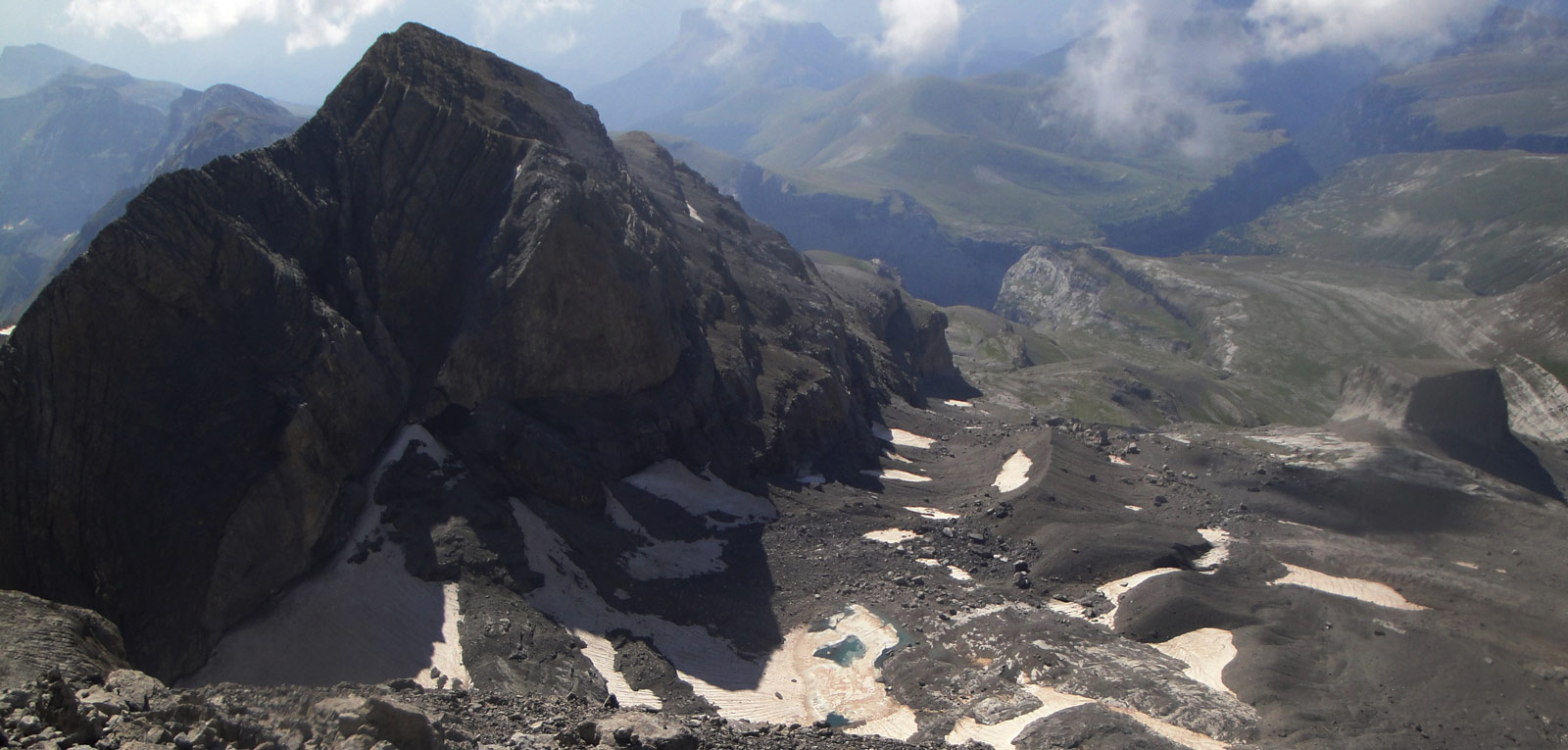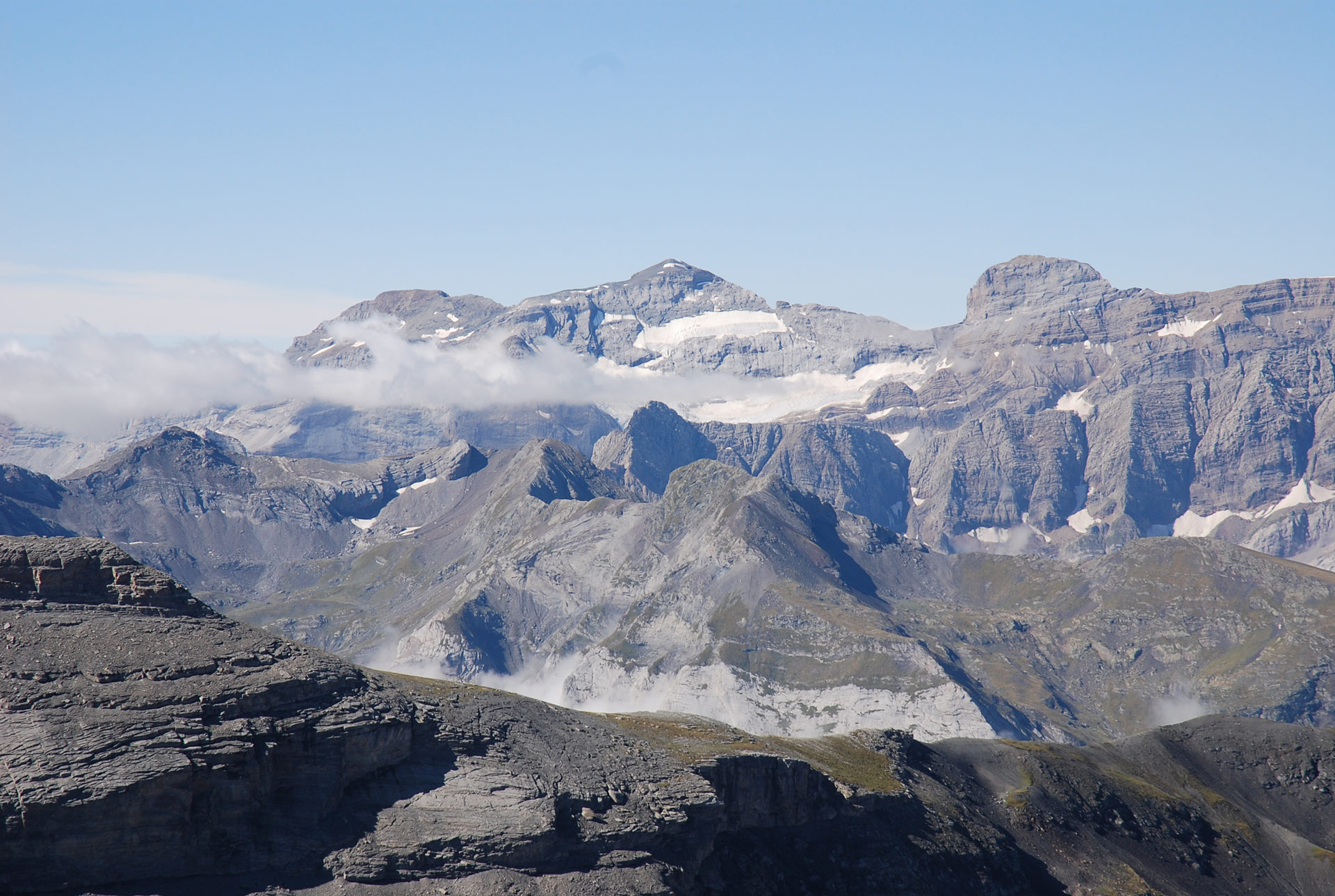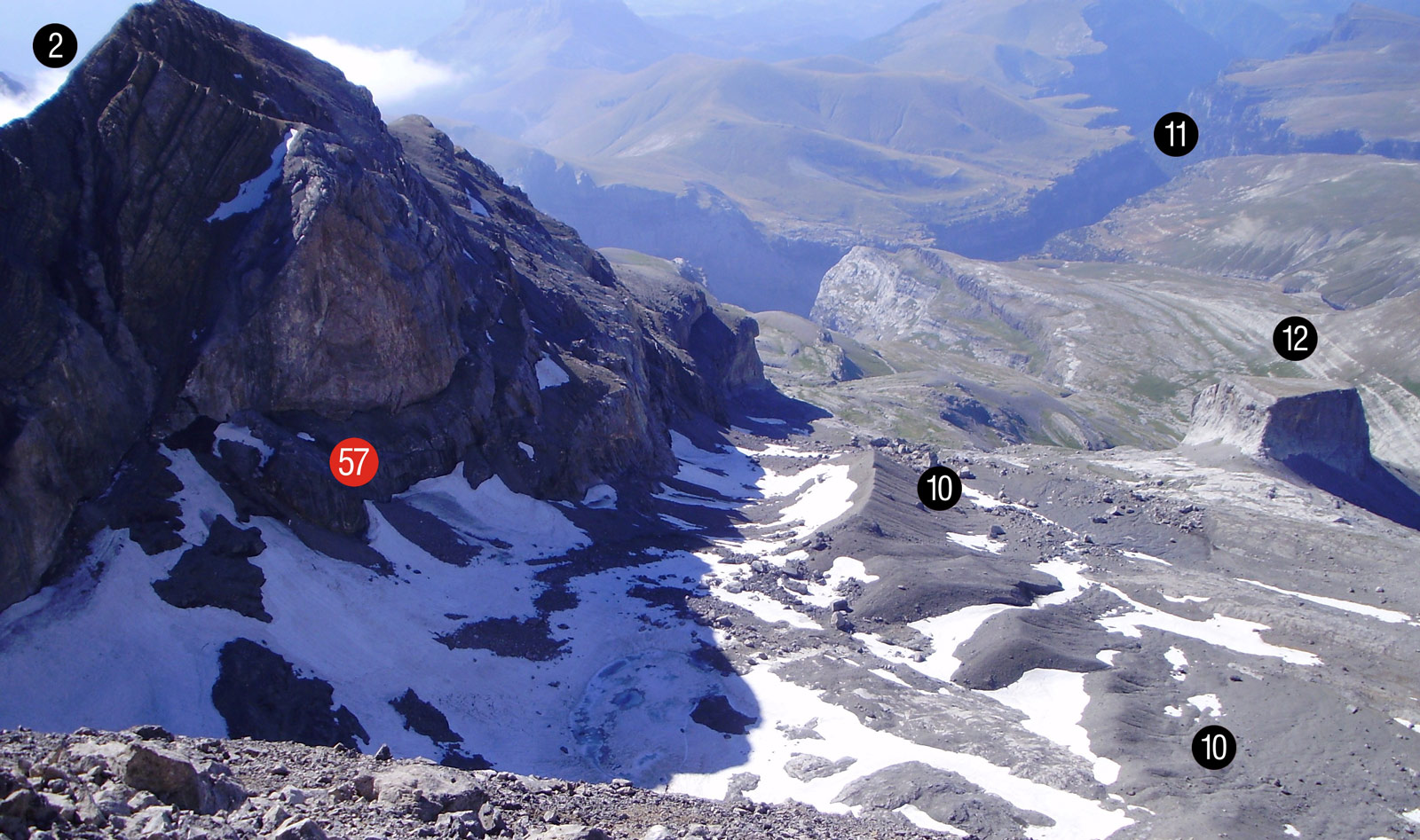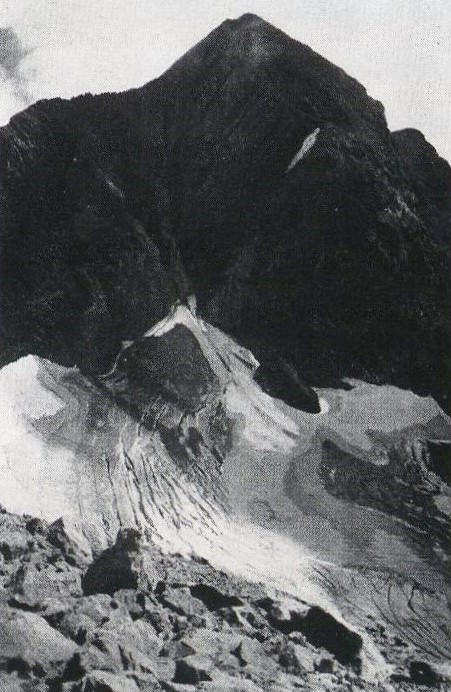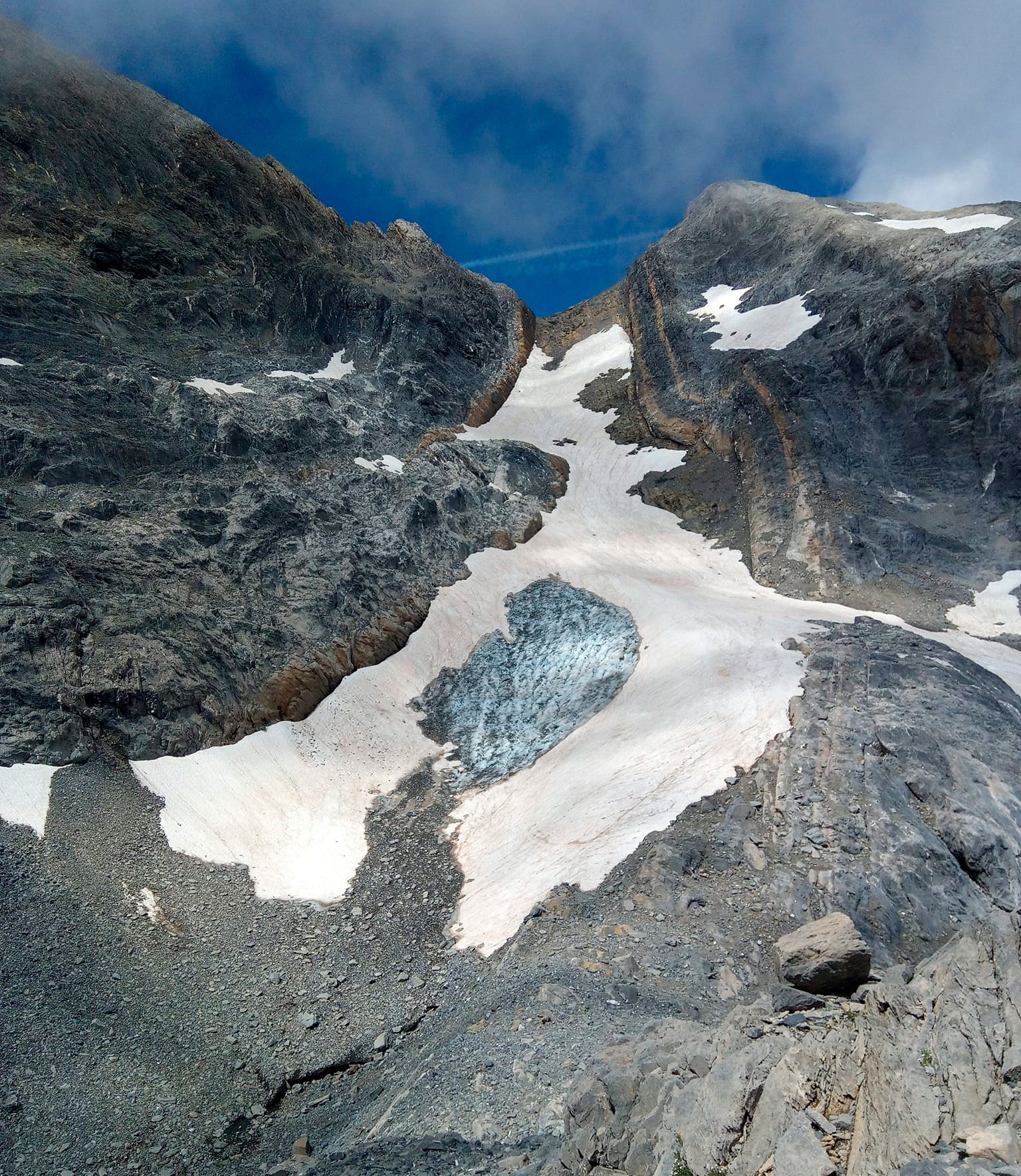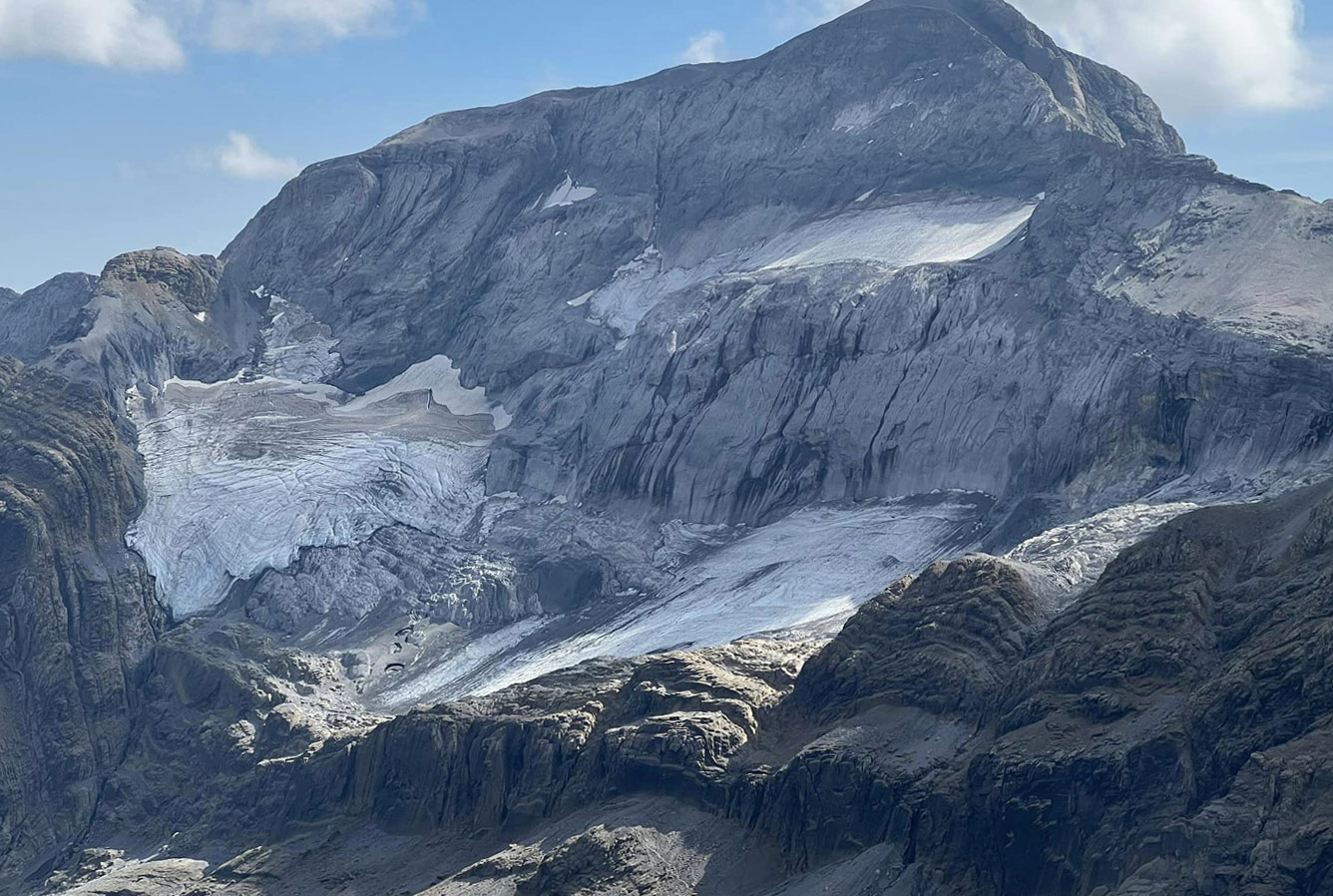The Añisclo Southwest Glacier, also known as the Arrablo or Ramond Glacier, reached an area of 33.3 hectares during the Little Ice Age, with a length of 610 metres and a width of 530 metres. Today, morainic remains of this extinct glacier can still be seen in the cirque between the peaks of Monte Perdido and Soum de Ramond or Pico de Añisclo.
Although its south-western exposure is not favourable for ice conservation, it probably maintained its glacial dynamics until the early 1970s. At that time, it appeared to have a cirque structure, retaining considerable thickness in its upper sector. The retreat process accelerated significantly at the end of the 20th century. As in the Ibones Blancos de Literola and the Gourgs Blancs, the retreat of the ice has exposed the Ibón de Arrablo, which became visible for the first time at the end of the 1980s.
Although the remains of ice were no longer visible in 2016, a 0.7-hectare glacier remains under the protection of debris, sheltered from solar radiation and in contact with a second, more recently formed upper lake. As indicated in the Coronas, Barroude, La Cascada and Brecha de Rolando ice fields, this is a new example of a “black ice field” in the Pyrenees, resulting from the combination of ice regression and its coverage by erosion materials.
The snowfields that occupy the space of the former glacier and subsequent helero until late summer are visible from a great distance, becoming the landmark that identifies Monte Perdido from the Aragonese plains to the south of the mountain range.
Este aparato glaciar pertenece al siguiente macizo:
57) Añisclo Suroeste
Comparativa de imágenes


A century-long comparison. From the summit of Monte Perdido.
The Añisclo Glacier SW between 1904 and 1914, probably in 1906. The moraine from the Little Ice Age is visible in the lower right, and the Pineta Valley in the upper left. (Juli Soler Santaló – AFCEC).
The Arrablo SW glacier (black glacier) in 2023, practically invisible between the wall of Soum de Ramond and the upper lake. On the right is the Arrablo lake and the moraines of the Little Ice Age. (Francisco González).

